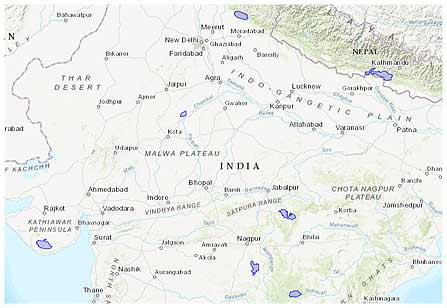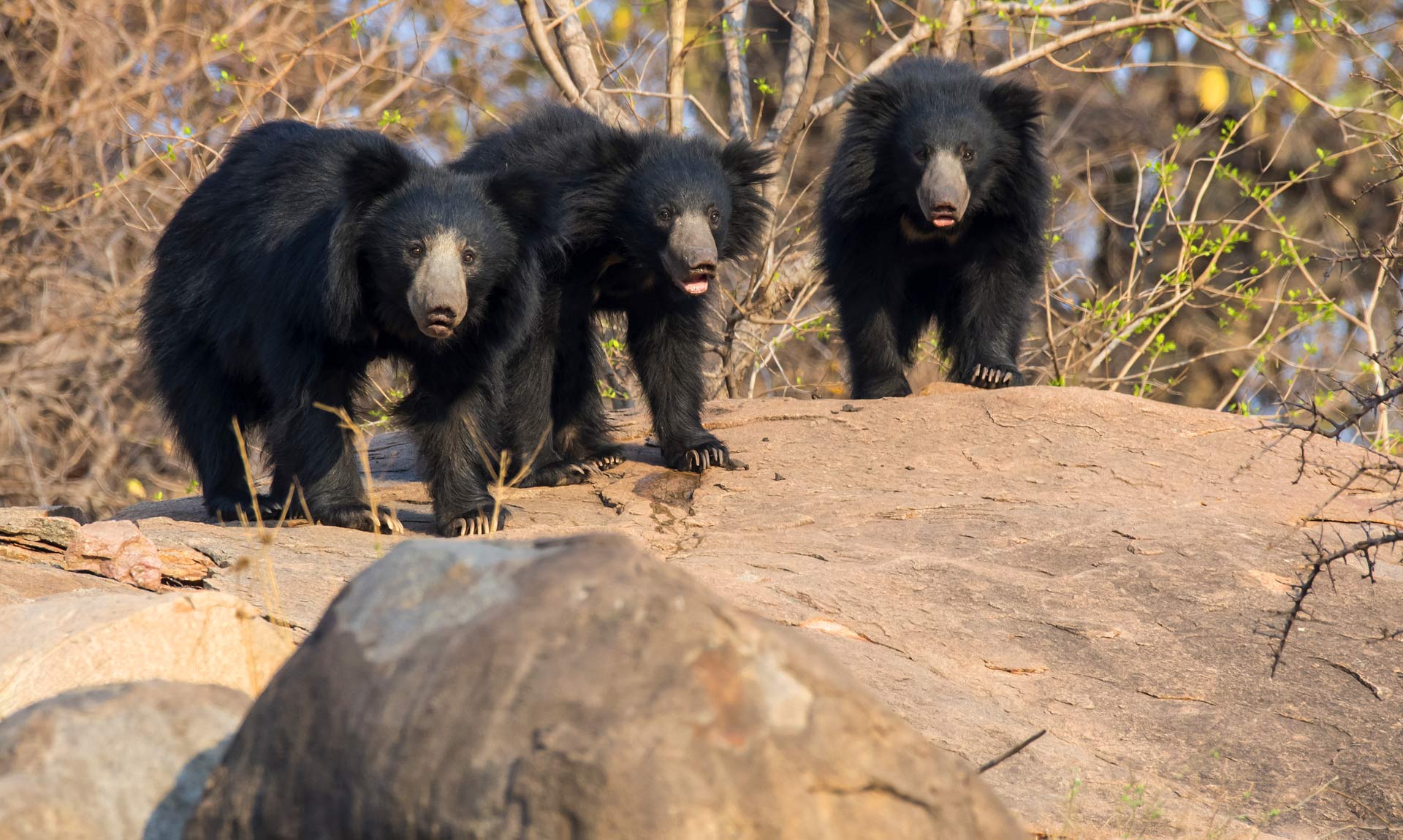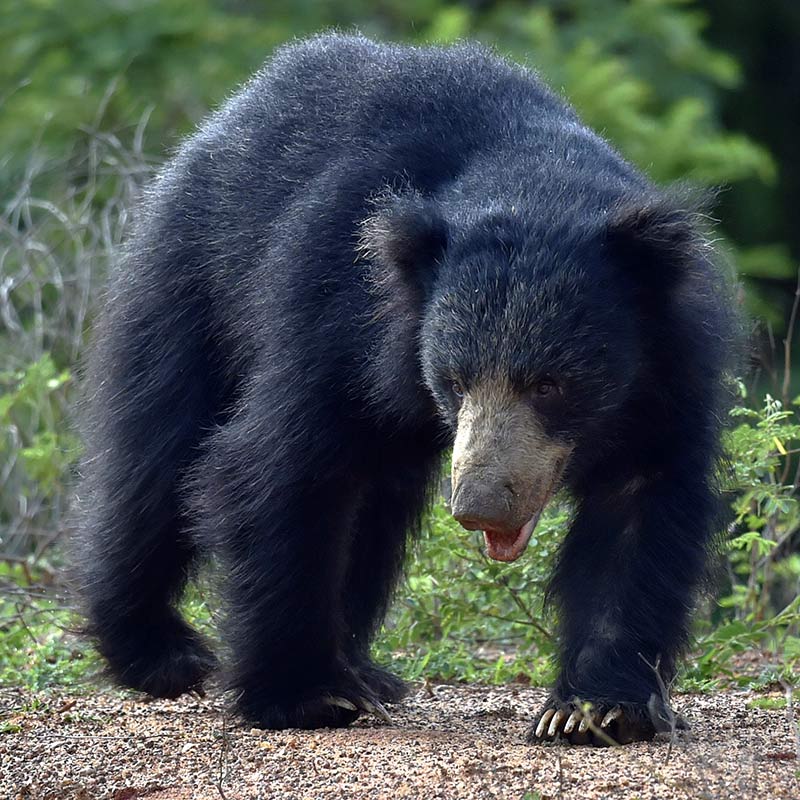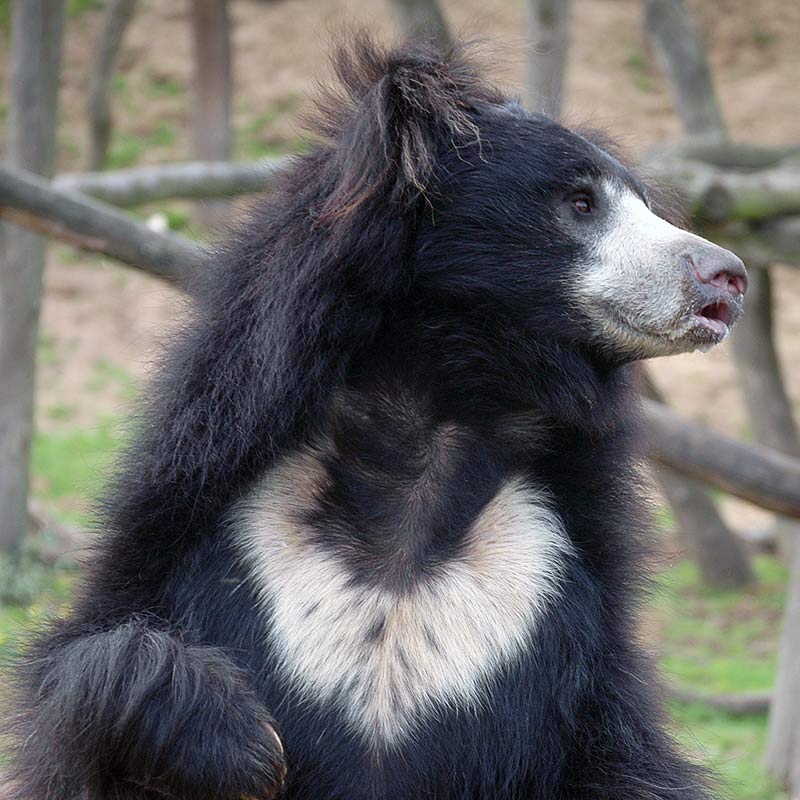SLOTH BEARS LEFT

APPROXIMATELY 10,000 REMAIN IN THE WILD
 IN 1990 THERE WERE APPROXIMATELY 14,000 – 15,000 SLOTH BEARS IN THE WILD
IN 1990 THERE WERE APPROXIMATELY 14,000 – 15,000 SLOTH BEARS IN THE WILD
 STRONGHOLDS: INDIA, SRI LANKA, BANGLADESH, NEPAL, AND BHUTAN; PRIMARILY IN PROTECTED WILDLIFE HABITATS
STRONGHOLDS: INDIA, SRI LANKA, BANGLADESH, NEPAL, AND BHUTAN; PRIMARILY IN PROTECTED WILDLIFE HABITATS
 THE SLOTH BEAR IS CLASSIFIED AS VULNERABLE ON THE IUCN RED LIST
THE SLOTH BEAR IS CLASSIFIED AS VULNERABLE ON THE IUCN RED LIST
SLOTH BEAR FACTS

Unlike its cousins in the bear family, the Sloth Bear’s primary diet is fruit and insects. It has curved claws, long snout, long tongue and nostrils that are able to close at will. As a result, the Sloth Bear is easily able to forage for insects. The Sloth Bear has a long shaggy coat, which is usually black, although some with reddish coats have been seen.
Sloth Bears are typically loners, except for females caring for their cubs. They appear to be most active during daylight hours. Their mating season runs from June to July and cubs are usually born between November – January.
Sloth Bears were the original ‘Dancing Bears’ who have been popular performers in India and elsewhere for decades.
SLOTH BEAR HABITATS

The Sloth Bear’s natural habitat is forests and grasslands in India, Sri Lanka, Bangladesh, Nepal, and Bhutan. They appear to shy away from higher elevations and prefer drier forests with rock formations. Today, splintered populations exist primarily in protected wildlife animal habitats. Ranthambore National Park in India and the Royal Chitwan National Park in Nepal are two of these.
SLOTH BEAR THREATS

At one time, Sloth Bears were so numerous that human predators easily hunted them. As human population grew, the Sloth Bears’ natural habitat began being cleared for agriculture and timber. The building of road networks and other developmental activities have also contributed to habitat loss.
Sloth Bears are poached, in India, for their gall bladders, bile, paws and other parts. These parts are used in traditional Asian medicine. Sloth Bears have been protected under law since the Indian Wildlife Protection Act of 1972. However, some poachers will still go as far as baiting food with explosives to capture Sloth Bears. An estimated 700 – 1,500 Sloth Bears were shipped from India to Japan per year through the 1980s. There is no hard data indicating how many Sloth Bears are poached presently. However, this practice is known to continue today.









